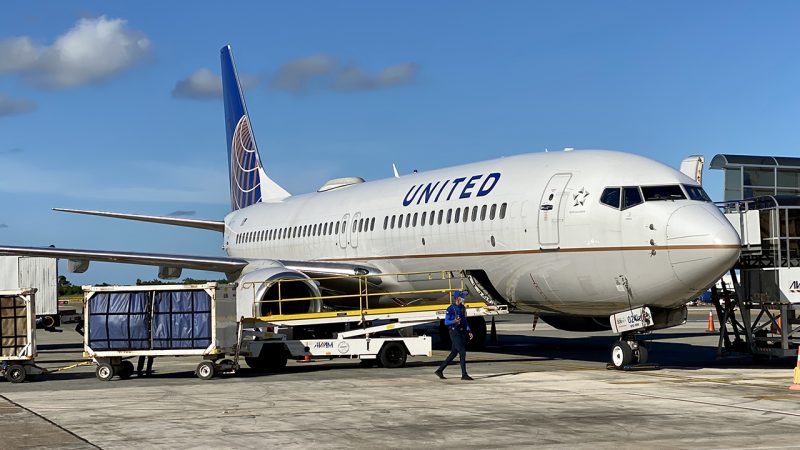(NEXSTAR) – Passengers aboard a United Airlines flight from Vancouver to Houston reported feeling ill upon arrival Friday afternoon, prompting to the airline to take the plane out of service for a “deep cleaning,” a United spokesperson confirmed.
A total of 25 passengers were sickened, Martee Black, a spokesperson for the Houston Fire Department, told Nexstar. Three were treated on the scene at George Bush Intercontinental airport, according to the Houston Airport System; the rest elected to continue on their journey or head home.
“Public health officers from CDC’s Houston Port Health Station worked with EMS to evaluate ill passengers on board,” a spokesperson for the CDC wrote in an emailed statement obtained by Nexstar.
Most of the sickened passengers had only “mild GI symptoms,” the CDC added, and none were exhibiting a fever.
“No passengers met CDC criteria for further public health follow-up,” the CDC wrote. “Passengers from the flight continued with their travel plans.”
Black, of the Houston Fire Department, said the sickened passengers were previously on a cruise together. (Around 75 of the United passengers, total, were on that same cruise, HFD said.) United Airlines, in its statement, also indicated that at least “several” of the sickened passengers had “been on the same cruise” prior to boarding the flight in Vancouver.
Neither the HFD, nor United, said which cruise the passengers may have taken.
“United Airlines is actively coordinating with health authorities to address the situation,” an airline spokesperson said. “As a precautionary measure, the aircraft will be removed from service and go through a deep cleaning before returning to service. Ensuring the health and safety of our passengers and crew remains our top priority.”
Cases of norovirus on cruise ships, meanwhile, have been reported on several different cruise lines in recent months, sickening hundreds of passengers, according to the CDC.
Outbreaks of norovirus are said to be the “most frequent” cause of stomach bugs on cruise ships, the CDC notes, though cruises are a relatively rare setting for such outbreaks, accounting for only about 1% in the U.S., the agency says. (They’re more frequently reported in health care facilities, restaurants and child care centers.) Still, such outbreaks can be “especially challenging to control” on cruise vessels because of passengers sharing recreational and dining spaces, the CDC says.

